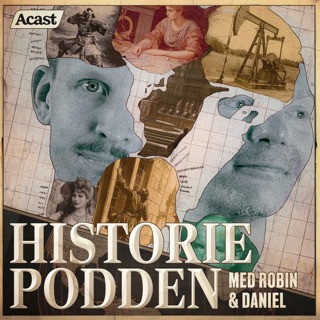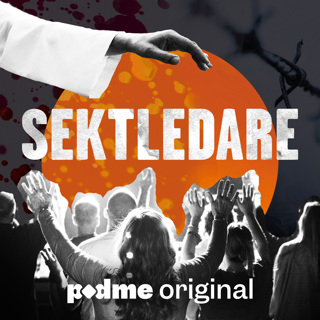
February 2020 Preview
Heeeeey, it’s Rob’s birthday. And rather than watch the time-caper thriller “Happy Death Day 2U” like he wanted to, let’s have a February preview. This month we kick things off with a trip to the gallery of line graphs to discuss improvements in visual inspection methodology. After that, we’ll be joined by Dr. John O’Neill to learn about how behavior analysis can inform research into improving police training. Finally, we revisit a tangentially-discussed topic with articles reviewing a multitude of ways to utilize self-monitoring. Then I’m promised we can eat cake and play video games. Also, don’t forget to join us on February 26th @ 7pm at Ground Effect Brewery in Hudson, MA for our very first ABA Trivia evening! Articles for February 2020 Visual Inspection Vanselow, N.R., Thompson, R., & Karsina, A. (2011). Data-based decision making: The impact of data variability, training, and context. Journal of Applied Behavior Analysis, 44, 767-780. doi: 10.1901/jaba.2011.44-767 Wolfe, K., Barton, E.E., & Meadan, H. (2019). Systematic protocols for the visual analysis of single-case research data. Behavior Analysis in Practice, 12, 491-502. doi: 10.1007/s40617-019-00336-7 Falligant, J.M., McNulty, M.K., Hausman, N.L., & Rooker, G.W. (2019). Using dual-criteria methods to supplement visual inspection: Replication and extension. Journal of Applied Behavior Analysis. doi: 10.1002/jaba.665 Police Academy 8: Behavior Analysts on Patrol w/ Dr. John O’Neill O’Neill, J. (2018). Functional behavior assessment of the unintentional discharge of firearms in law enforcement. Journal of Organizational Behavior Management, 38, 275-287. doi: 10.1080/01608061.2018.1514348 O’Neill, J., O’Neill, D.A., Weed, K., Hartman, M.E., Spence, W., & Lewinski, W.J. (2019). Police academy training, performance, and learning. Behavior Analysis in Practice, 12, 353-372. doi: 10.1007/s40617-018-00317-2 Self-monitoring Winett, R.A., Neale, M.S., & Grier, H.C. (1979). Effects of self-monitoring and feedback on residential electricity consumption. Journal of Applied Behavior Analysis, 12, 173-184. doi: 10.1901/jaba.1979.12-173 Critchfield, T.S. (1999). An unexpected effect of recording frequency in reactive self-monitoring. Journal of Applied Behavior Analysis, 32, 389-391. doi: 10.1901/jaba.1999.32-389 Rafferty, L.A., Arroyo, J., Ginnane, S., & Wilczynski, K. (2011). Self-monitoring during spelling practice: Effects on spelling accuracy and on-task behavior of three students diagnosed with attention deficit hyperactivity disorder. Behavior Analysis in Practice, 4, 37-45. doi: 10.1007/BF03391773 Plavnick, J.B., Ferreri, S.J., & Maupin, A.N. (2010). The effects of self-monitoring on the procedural integrity of a behavioral intervention for young children with developmental disabilities. Journal of Applied Behavior Analysis, 43, 315-320. doi: 10.1901/jaba.2010.43-315
5 Feb 202018min

Episode 112 - Lying Behavior
Because your ABA Inside Track hosts are such chronic truth-tellers, we decided it was time to look into this “lying” we’ve heard so much about. For instance, we’re not sure why anyone would ever lie. Or whether it’s an important skill to learn how to lie, especially when your best friend tries on a questionable outfit. Or if learning about George Washington can really improve honesty. We promise, if you listen to ABA Inside Track’s new episode, you will be popular and more attractive.* *Note: we’re probably lying. Though we bet you’re still swell. Articles discussed this episode: Reinecke, D.R., Newman, B., Kurtz, A.L., Ryan, C.S., & Hemmes, N.S. (1997). Teaching deception skills in a game-play context to three adolescents with autism. Journal of Autism and Developmental Disorders, 27, 127-137. doi: 10.1023/a:1025835706522 Bergstrom, R., Najdowski, A.C., Alvarado, M., & Tarbox, J. (2016). Teaching children with autism to tell socially appropriate lies. Journal of Applied Behavior Analysis, 49, 1-6. doi: 10.1002/jaba.295 Sauter, J.A., Stocco, C.S., Luczynski, K.C., & Moline, A.D. (2019). Temporary, inconsistent, and null effects of a moral story and instruction on honesty. Journal of Applied Behavior Analysis. doi: 10.1002/jaba.552 If you're interested in ordering CEs for listening to this episode, click here to go to the store page. You'll need to enter your name, BCBA #, and the two episode secret code words to complete the purchase. Email us at abainsidetrack@gmail.com for further assistance.
29 Jan 20201h 9min

Episode 111 - Behavior Analytic Language
If you’ve listened to more than one of our episodes, you must enjoy listening to behavior analytic terminology. If so, that makes you unlike most of America who ::GASP:: really dislikes ABA jargon. Should we be offended? Drop our monocles in shock? Perhaps instead we should use research to figure out a better way to improve how we disseminate the science of behavior in plain English. Articles discussed this episode: Lindsley, O.R. (1991). From technical jargon to plain English for application. Journal of Applied Behavior Analysis, 24, 449-458. doi: 10.1901/jaba.1991.24-449 Becirevic, A., Critchfield, T.S., Reed, D.D. (2016). On the social acceptability of behavior-analytic terms: Crowdsourced comparisons of lay and technical language. The Behavior Analyst, 39, 305-317. doi: 10.1007/s40614-016-0067-4 Critchfield, T.S., Doepke, K.J., Epting, L.K., Becirevic, A., Reed, D.D., Fienup, D.M., Kremsreiter, J.L., & Ecott, C.L. (2017). Normative emotional responses to behavior analysis jargon or how not to use words to win friends and influence people. Behavior Analysis in Practice, 10, 97-106. doi: 10.1007/s40617-016-0161-9 If you're interested in ordering CEs for listening to this episode, click here to go to the store page. You'll need to enter your name, BCBA #, and the two episode secret code words to complete the purchase. Email us at abainsidetrack@gmail.com for further assistance.
22 Jan 20201h 25min

Episode 110 - IISCA w/ Dr. Adithyan Rajaraman
While we’ve certainly mentioned and even discussed the IISCA in previous episodes, for some reason we’ve yet to do a full-length episode on this relatively new tool in the behavior assessment arsenal. That all changes this week as we do a deep dive into the interview-informed synthesized contingency analysis with our special guest, Dr. Adithyan Rajaraman. What is the IISCA? Why use the IISCA? And when is the IISCA? We promise to answer at least two of those burning questions. Articles discussed this episode: Rajaraman A., Hanley G.P. (2018) Interview-Informed Synthesized Contingency Analysis (IISCA). In: Volkmar F. (eds) Encyclopedia of Autism Spectrum Disorders. Springer, New York, NY. doi: 10.1007/978-1-4614-6435-8 Hanley, G.P., Jin, C.S., Vanselow, N.R., & Hanratty, L.A. (2014). Produing meaningful improvements in problem behavior of children with autism via synthesized analyses and treatments. Journal of Applied Behavior Analysis, 47, 16-36. doi: 10.1002/jaba.106 Jessel, J., Ingvarsson, E.T., Metras, R., Kirk, H., & Whipple, R. (2018). Achieving socially significant reductions in problem behavior following the interview-informed synthesized contingency analysis: A summary of 25 outpatient applications. Journal of Applied Behavior Analysis, 51, 130-157. doi: 10.1002/jaba.436 Slaton, J.D. & Hanley, G.P. (2018). Nature and scope of synthesis in functional analysis and treatment of problem behavior. Journal of Applied Behavior Analysis, 51, 943-973. doi: 10.1002/jaba.498 If you're interested in ordering CEs for listening to this episode, click here to go to the store page. You'll need to enter your name, BCBA #, and the two episode secret code words to complete the purchase. Email us at abainsidetrack@gmail.com for further assistance.
15 Jan 20201h 33min

Episode 109 - Sensory Extinction
It may be a question you remember from graduate school: What’s the deal with sensory extinction? Is it a form of extinction? Of punishment? Or, is it something else? This week, we revisit that old chestnut by discussion four articles that hope to solve the mystery of sensory extinction. And we review one of the most complementary replication articles of all time! Articles discussed this episode: Iwata, B.A., Pace, G.M., Cowdery, G.E., & Miltenberger, R.G. (1994). What makes extinction work: An analysis of procedural form and function. Journal of Applied Behavior Analysis, 27, 131-144. doi: 10.1901/jaba.1994.27-131 Mazaleski, J.L., Iwata, B.A., Rodgers, T.A., Vollmer, T.R., & Zarcone, J.R. (1994). Protective equipment as treatment for stereotypic hand mouthing: Sensory extinction or punishment effects? Journal of Applied Behavior Analysis, 27, 345-355. doi: 10.1901/jaba.1994.27-345 Lerman, D.C. & Iwata, B.A. (1996). A methodology for distinguishing between extinction and punishment effects associated with response blocking. Journal of Applied Behavior Analysis, 29, 231-233. doi: 10.1901/jaba.1996.29-231 Smith, R.G., Russo, L., & Le, D.D. (1999). Distinguishing between extinction and punishment effects of response blocking: A replication. Journal of Applied Behavior Analysis, 32, 367-370. doi: 10.1901/jaba.1999.32-367 If you're interested in ordering CEs for listening to this episode, click here to go to the store page. You'll need to enter your name, BCBA #, and the two episode secret code words to complete the purchase. Email us at abainsidetrack@gmail.com for further assistance.
8 Jan 20201h 5min

January 2020 Preview
Happy New Year! We brush off our New Year’s Resolutions by promising even more fun and exciting topics. You can trust us: We’ve read all the research on lying! Plus, Jackie promises more fun by announcing our inaugural ABA Inside Track Trivia Night. And the proper unveiling of our updated theme song by a musician you’ll recognize. Welcome to 2020, BCBAs! Articles for January 2019 Sensory Extinction Iwata, B.A., Pace, G.M., Cowdery, G.E., & Miltenberger, R.G. (1994). What makes extinction work: An analysis of procedural form and function. Journal of Applied Behavior Analysis, 27, 131-144. doi: 10.1901/jaba.1994.27-131 Mazaleski, J.L., Iwata, B.A., Rodgers, T.A., Vollmer, T.R., & Zarcone, J.R. (1994). Protective equipment as treatment for stereotypic hand mouthing: Sensory extinction or punishment effects? Journal of Applied Behavior Analysis, 27, 345-355. doi: 10.1901/jaba.1994.27-345 Lerman, D.C. & Iwata, B.A. (1996). A methodology for distinguishing between extinction and punishment effects associated with response blocking. Journal of Applied Behavior Analysis, 29, 231-233. doi: 10.1901/jaba.1996.29-231 Smith, R.G., Russo, L., & Le, D.D. (1999). Distinguishing between extinction and punishment effects of response blocking: A replication. Journal of Applied Behavior Analysis, 32, 367-370. doi: 10.1901/jaba.1999.32-367 IISCA w/ Dr. Adithyan Rajaraman Rajaraman A., Hanley G.P. (2018) Interview-Informed Synthesized Contingency Analysis (IISCA). In: Volkmar F. (eds) Encyclopedia of Autism Spectrum Disorders. Springer, New York, NY. doi: 10.1007/978-1-4614-6435-8 Hanley, G.P., Jin, C.S., Vanselow, N.R., & Hanratty, L.A. (2014). Produing meaningful improvements in problem behavior of children with autism via synthesized analyses and treatments. Journal of Applied Behavior Analysis, 47, 16-36. doi: 10.1002/jaba.106 Jessel, J., Ingvarsson, E.T., Metras, R., Kirk, H., & Whipple, R. (2018). Achieving socially significant reductions in problem behavior following the interview-informed synthesized contingency analysis: A summary of 25 outpatient applications. Journal of Applied Behavior Analysis, 51, 130-157. doi: 10.1002/jaba.436 Slaton, J.D. & Hanley, G.P. (2018). Nature and scope of synthesis in functional analysis and treatment of problem behavior. Journal of Applied Behavior Analysis, 51, 943-973. doi: 10.1002/jaba.498 Behavior Analytic Language Lindsley, O.R. (1991). From technical jargon to plain English for application. Journal of Applied Behavior Analysis, 24, 449-458. doi: 10.1901/jaba.1991.24-449 Becirevic, A., Critchfield, T.S., Reed, D.D. (2016). On the social acceptability of behavior-analytic terms: Crowdsourced comparisons of lay and technical language. The Behavior Analyst, 39, 305-317. doi: 10.1007/s40614-016-0067-4 Critchfield, T.S., Doepke, K.J., Epting, L.K., Becirevic, A., Reed, D.D., Fienup, D.M., Kremsreiter, J.L., & Ecott, C.L. (2017). Normative emotional responses to behavior analysis jargon or how not to use words to win friends and influence people. Behavior Analysis in Practice, 10, 97-106. doi: 10.1007/s40617-016-0161-9 Lying Behavior Reinecke, D.R., Newman, B., Kurtz, A.L., Ryan, C.S., & Hemmes, N.S. (1997). Teaching deception skills in a game-play context to three adolescents with autism. Journal of Autism and Developmental Disorders, 27, 127-137. doi: 10.1023/a:1025835706522 Bergstrom, R., Najdowski, A.C., Alvarado, M., & Tarbox, J. (2016). Teaching children with autism to tell socially appropriate lies. Journal of Applied Behavior Analysis, 49, 1-6. doi: 10.1002/jaba.295 Sauter, J.A., Stocco, C.S., Luczynski, K.C., & Moline, A.D. (2019). Temporary, inconsistent, and null effects of a moral story and instruction on honesty. Journal of Applied Behavior Analysis. doi: 10.1002/jaba.552
1 Jan 202020min

Bonus Episode 20 - The Year in ABA (2019) w/ Matt Cicoria
As 2019 comes to a close, we’re joined by our podcasting buddy, Matt Cicoria, of the Behavioral Observations podcast to wax philosophical about all the going’s-on in behavior analysis in the past 12 months. From memorials to trends in research and practice we’d like to see continue to our hopes for the next year of our science. Wishing all of you Happy Holidays!
25 Dec 20191h 17min

Episode 108 - Research Grab Bag IX: Research S'mores
Well, how nice of you to stop by the ol’ campfire. Pull up a log, why dontcha? We’re just swappin’ stories, stories about our favorite research topics. Care for a marshmallow with chocolate and graham crackers? You can make one of those, whaddya call ‘em. S’mores? Do you have a favorite research article to spin a yarn about? Something to keep the dark and cold away? Here, why don’t I start… Articles discussed this episode: Bowman, L.G., Hardesty, S.L., Sigurdsson, S.O., McIvor, M., Orchowitz, P.M., Wagner, L.L., & Hagopian, L.P. (2019). Utilizing group-based contingencies to increase hand washing in a large human service setting. Behavior Analysis in Practice, 12, 600-611. doi: 10.1007/s40617-018-00328-z Sheply, C. & Grisham-Brown, J. (2019). Applied behavior analysis in early childhood education: An overview of policies, research, blended practices, and the curriculum framework. Behavior Analysis in Practice, 12, 235-246. doi: 10.1007/s40617-018-0236-x Ingul, J.M., Havik, T., & Heyne, D. (2019). Emerging school refusal: A school-based framework for identifying early signs and risk factors. Cognitive and Behavioral Practice, 26, 46-62. doi: 10.1016/j.cbpra.2018.03.005 If you're interested in ordering CEs for listening to this episode, click here to go to the store page. You'll need to enter your name, BCBA #, and the two episode secret code words to complete the purchase. Email us at abainsidetrack@gmail.com for further assistance.
18 Dec 20191h 14min






















